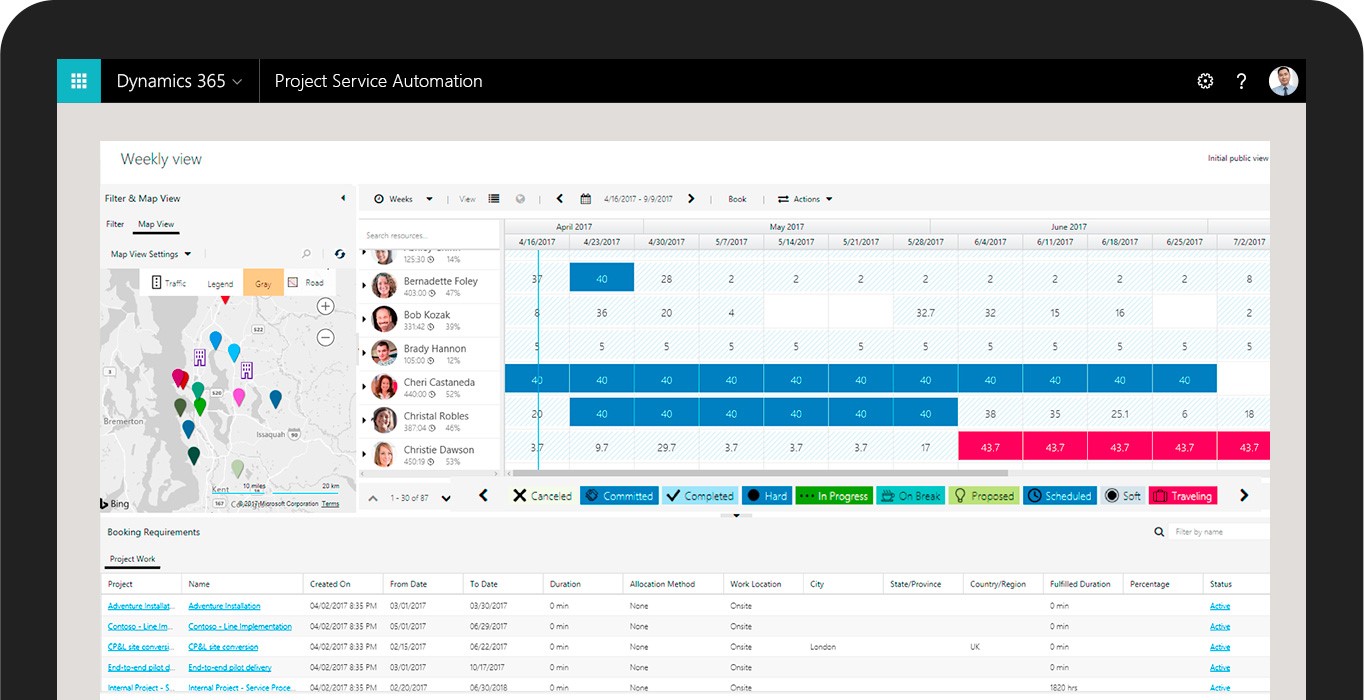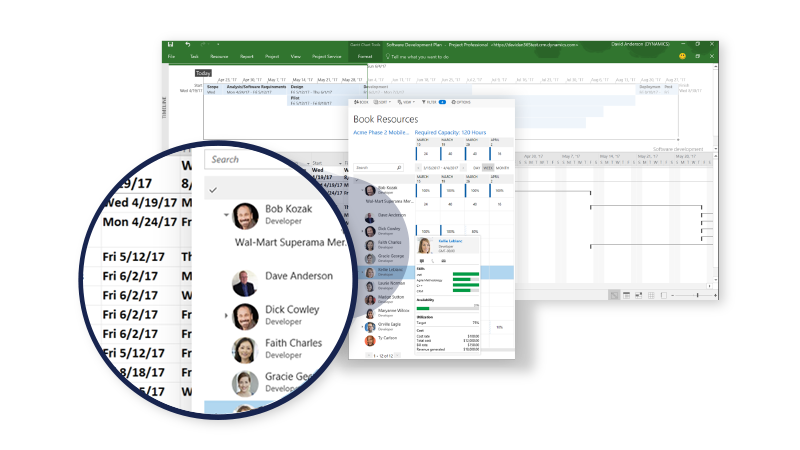Making the Business Case for PSA in a Project-Centric Company
PSA solutions are designed to assist project-centric companies with project management and resource management for client projects.
PSA solutions are designed to assist project-centric companies with project management and resource management for client projects.
Table of Content
I’m often asked about PSA (Professional Services Automation) solutions by potential buyers. Is it critical to success? Is it more of a luxury solution to make things easier? Will it pay for itself in the long-run? Short-run? What they’re really asking, in most cases, is: “How do I sell it to our executive team?”
For the longest time, I was confused by this. In my experience, it is often the executive team that drives the pursuit of a PSA solution. Their need for more accurate reporting, project profitability and overall visibility of operational effectiveness in a professional services firm leads right to PSA. So why the sell? I’ve come to the conclusion that overselling features of other solutions by those in the software market are often the problem. Overzealous sales and marketing people pitch every ERP, CRM, Office productivity and project management solution as the end-all, be-all answer for professional services.
While each of these application families can deliver tremendous value to a services company, it is often an over-reach. However, a PSA solution not integrated with core ERP or CRM systems is never as effective as those which are. That’s why we love working with Microsoft Dynamics, and especially the Dynamics 365 suite. But…my appreciation for Microsoft Dynamics is not the focus of today’s post. Rather, how to help you share the potential value of an enterprise PSA solution with your executive team. Let’s get started.

PSA solutions are designed to assist project-centric companies with project management and resource management for client projects. This is accomplished by developing metrics to quantify and qualify basic business processes that can then be used to streamline and improve those processes. Typical PSA functions include project management and documentation, time recording, billing, reporting and labor utilization. These features are often integrated with accounting, Customer Relationship Management (CRM) systems, and payroll systems in order to improve the efficiency of overall operations. In addition to better managing client projects, the right PSA can prevent lost revenue and lagging billing cycles thereby improving cash flow.
Ultimately PSA software suites allow users to integrate industry-appropriate metrics in order to better understand operations and, in turn, improve efficiency and profitability. As businesses grow, the size and complexity of their projects tend to increase and with it, their investment in PSA software.

Generalizations about the value of leveraging software to improve project and services delivery are enough to get started, but here are some more specific points you can add to your pitch.
While PSA is best known for improving resource and project management, the most significant impact is providing real-time visibility into all aspects of delivery. Delivery resources can simultaneously see the status of current and forecasted projects, historical or projected costs and revenue, the supply and demand for key resources, and issues that could impact a successful project outcome. With real-time visibility, executives can more efficiently and effectively run the business. Organizations with high levels of real-time visibility grow more rapidly and face less employee attrition and fewer projects go south.
Every services organization struggles with the almighty utilization target. Keep everyone working 100% of the time and you print cash. Keep them sitting on the bench and the business fails. Finding a balance of resources that works for your customers as well as your business is the key to success. A well-implemented PSA solution helps you identify and work towards that optimal service model as the business fluctuates. It can help you determine the best mix between full-time and contract employees, training requirements needed, etc. Most importantly, your entire management team will have a better understanding of backlog and ability to meet demand at any given point during the year.
Without a PSA solution in place, time and expense data is usually captured through standard payroll or financial systems. This data is ultimately sent to the project team, but not in real time. Sometimes, there is a considerable gap of days or weeks. The extra processing time and the potential for mistakes can be a negative impact on the customer relationship and internal project management.
PSA systems allow time card information to be entered through apps or even calendar plugins to improve efficiency and cut down on errors. Allocations, project success, cash-flow, and billing frequency are all positively impacted.
Ensuring that project doers and project planners stay aligned is extremely important. How you bill, when you bill and how you recognize revenue are often tied to performance milestones, as outlined in ASC 606 and IFRS 2015 guidelines.
Many companies, even those with enterprise ERP and high-end forecasting tools, will need to build a plan to implement process updates and retool the development of complex contracts. Firms relying entirely on Excel or outdated planning and project management solutions may find the need to purchase and implement new software even before other processes can be adapted. It will take a comprehensive, collaborative effort to realign business planning and budgeting as your back office team adapts to these new accounting standards.

SBS Group has deployed PSA solutions for hundreds of companies over the last 30 years. Today, we focus on Microsoft solutions, including Dynamics 365. Within the Dynamics Suite, there are different options available for companies of varying sizes and needs, but all benefit from the sweeping integration across the Microsoft stack.
Dynamics 365 unifies the best of Microsoft’s customer relationship management (CRM) and enterprise resource planning (ERP) solutions into one fully integrated cloud service. It offers deep integration with Office 365 and allows you to tailor your implementation with sophisticated productivity apps to support crucial business processes, including sales, customer service, finance, field service, operations, marketing and project service automation. It utilizes one common set of data across CRM, ERP and Office 365, simplifying data management and allowing for seamless integration across apps and business processes. Tools like PowerBI, Microsoft Flow, PowerApps and Cortana Business Intelligence work seamlessly with Dynamics 365 operations and PSA to create one of the most comprehensive solutions for professional services companies in the market today.
If they’re not connecting the value of the right PSA to business results, you may need to show them. I know that most CFOs and CEOs either don’t have the time or interest in sitting through a software demonstration. However, a focused discussion on business value can be much more impactful when the software solution is used as a backdrop to the conversation. Discuss the benefits you’re expecting and follow with a 5-minute peek into how the system works.
Also, remember that there is more than one way to deploy a PSA solution. Obvious questions, like in the cloud or on-premises will always come up for discussion. Be ready to discuss cost, risk and operational pros and cons of each. Grounding your solution in the up-front bid process and WBS vs an ERP-based PSA solution to manage project accounting will factor heavily into product selection. Many questions, but all should result in a solution that drives genuine bottom-line benefits to the company.
If you would like to explore this further, please feel free to reach out to me directly at rmorrison@sbsgroupusa.com.
Best regards,
Robbie Morrison
Chief Solution Strategist, SBS Group
About Robbie
Robbie Morrison has spent nearly 20 years helping customers build and deploy elegant technology and business solutions. From start-ups to enterprise-class organizations worldwide, his knowledge of the Microsoft Dynamics ecosystem and products helps SBS Group customers maximize ROI on technology investments.Today, Robbie serves SBS Group customers in his role as Chief Solution Strategist where he provides thought leadership and manages the development of B2B solutions. Robbie received his MBA from the University of Georgia, Terry College of Business.
https://www.linkedin.com/in/robbiemorrison
Talk to us about how Velosio can help you realize business value faster with end-to-end solutions and cloud services.